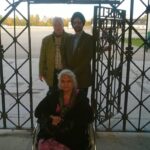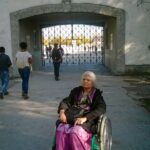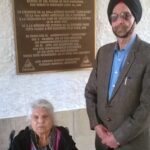Establishment of the Dachau Camp
The Dachau concentration camp was established in March 1933. It was the first regular concentration camp established by the National Socialist (Nazi) government. Heinrich Himmler, as police president of Munich, officially described the camp as “the first concentration camp for political prisoners.”
It was located on the grounds of an abandoned munitions factory near the north eastern part of the town of Dachau, about 10 miles northwest of Munich in southern Germany. On March 22, 1933, the first prisoner transports arrived at the camp.
During the first year, the camp had a capacity of 5,000 prisoners. Initially the internees were primarily German Communists, Social Democrats, trade unionists, and other political opponents of the Nazi regime. Over time, other groups were also interned at Dachau, such as Jehovah’s Witnesses, Roma (Gypsies), homosexuals, as well as repeat criminal offenders. During the early years relatively, few Jews were interned in Dachau and then usually because they belonged to one of the above groups or had completed prison sentences after being convicted for violating the Nuremberg Laws of 1935.
Construction of Crematorium
In 1942, the crematorium area was constructed next to the main camp. It included the old crematorium and the new crematorium (Barrack X) with a gas chamber. Mass executions by shooting took place, first in the bunker courtyard and later in a specially designed SS shooting range. Thousands of Dachau prisoners were murdered there, including at least 4,000 Soviet prisoners of war following the invasion of the Soviet Union in 1941.
The number of prisoners incarcerated in Dachau between 1933 and 1945 exceeded 200,000.
The number of prisoners who died in the camp and the subcamps between January 1940 and May 1945 was at least 28,000. This number does not include those who perished there between 1933 and the end of 1939, as well as an unknown number of unregistered prisoners. It is unlikely that the total number of victims who died in Dachau will ever be known.
PLEASE CLICK ANY PICTURE TO SEE ENLARGE VIEW















